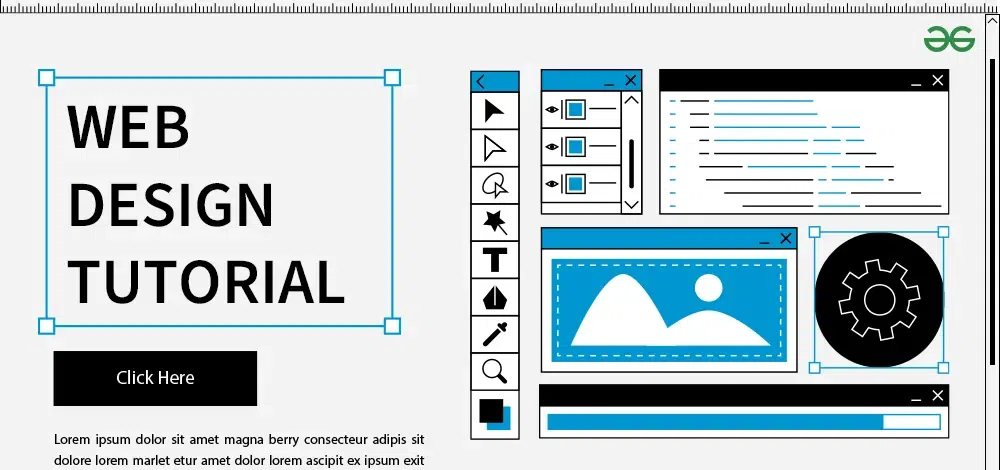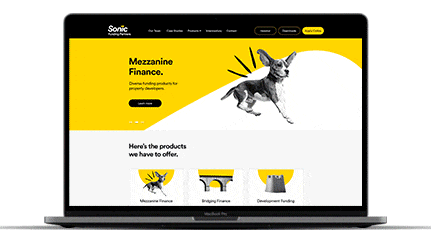Important Devices Every Designer Demands for Sensational Website Design
Important Devices Every Designer Demands for Sensational Website Design
Blog Article

Crafting a User-Friendly Experience: Crucial Components of Effective Internet Site Style
Necessary aspects such as a clear navigation framework, responsive design concepts, and quickly loading times offer as the foundation for engaging individuals properly. Recognizing the underlying aspects that contribute to reliable design can lose light on exactly how to boost customer fulfillment and interaction.
Clear Navigating Framework
A clear navigation structure is fundamental to efficient web site style, as it directly affects user experience and involvement. Customers ought to have the ability to find info easily, as user-friendly navigation minimizes disappointment and urges expedition. An efficient layout allows site visitors to recognize the connection in between different web pages and content, bring about longer website gos to and raised interaction.
To accomplish clarity, developers ought to employ familiar patterns, such as side or top navigation bars, dropdown menus, and breadcrumb routes. These components not just boost usability however likewise supply a feeling of positioning within the site. Maintaining a constant navigation framework across all web pages is important; this knowledge assists individuals expect where to discover preferred details.
Additionally, including search functionality can additionally help customers in situating certain material promptly. In summary, a clear navigation framework is not merely a layout option; it is a tactical component that substantially affects the total success of a web site by fostering a satisfying and efficient customer experience.
Responsive Style Concepts
Effective website navigating establishes the stage for a seamless customer experience, which ends up being much more vital in the context of responsive design principles. Receptive layout ensures that internet sites adjust fluidly to various screen sizes and orientations, boosting ease of access across tools. This versatility is attained via adaptable grid designs, scalable pictures, and media inquiries that enable CSS to adjust styles based on the gadget's characteristics.
Secret concepts of receptive layout include fluid layouts that use percents instead than fixed units, making sure that components resize proportionately. In addition, using breakpoints in CSS makes it possible for the style to transition smoothly in between different gadget dimensions, enhancing the layout for each and every screen type. Using responsive pictures is likewise crucial; photos should automatically get used to fit the screen without shedding top quality or triggering design changes.
Moreover, touch-friendly user interfaces are critical for mobile users, with adequately sized switches and user-friendly gestures improving individual interaction. By incorporating these concepts, developers can produce sites that not only look visually pleasing however additionally supply useful and interesting experiences across all tools. Eventually, effective receptive design promotes user contentment, lowers bounce prices, and motivates longer engagement with the content.
Rapid Loading Times
While users increasingly expect web sites to load swiftly, quickly packing times are not simply a matter of convenience; they are important for retaining visitors and enhancing overall user experience. Research study indicates that individuals typically abandon websites that take longer than three seconds to lots. This desertion can result in boosted bounce prices and reduced conversions, ultimately harming a brand's track record and profits.
Fast packing times improve individual engagement and contentment, as site visitors are much more most likely to discover a site that responds quickly to their interactions. Furthermore, search engines like Google focus on speed in their ranking formulas, meaning that a browse this site slow-moving web site may have a hard time to attain presence in search engine result.

User-friendly Interface
Rapid filling times prepared for an engaging online experience, however they are just component of the formula. An intuitive individual interface (UI) is important to ensure visitors can navigate a website effortlessly. A well-designed UI permits customers to accomplish their objectives with minimal cognitive load, promoting a seamless interaction with the site.
Secret elements of an intuitive UI include regular format, clear navigation, and recognizable symbols. Consistency in design components-- such as color design, typography, and button designs-- helps individuals recognize how to communicate with the web site. Clear navigating structures, including logical menus and breadcrumb trails, allow users to find details swiftly, reducing stress and improving retention.
In addition, responses systems, such as hover impacts and filling indications, educate individuals concerning their actions and the internet site's feedback. This openness grows trust fund and urges continued engagement. Moreover, focusing on mobile responsiveness guarantees that users delight in a cohesive experience throughout gadgets, satisfying the varied methods audiences accessibility content.
Available Content Standards
%20%5B60%25%5D.jpg)
First, make use of clear and uncomplicated language, avoiding lingo that may puzzle visitors. Emphasize proper heading structures, which not just description aid in navigation yet likewise help screen viewers in analyzing content hierarchies effectively. Additionally, give alternate text for images to communicate their definition to users that rely upon assistive technologies.
Contrast is another important aspect; make sure that message stands apart against the history to enhance readability. Make certain that video and audio web content consists of records and inscriptions, making multimedia obtainable to those with hearing impairments.
Last but not least, incorporate keyboard navigability right into your design, enabling customers that can not utilize a computer mouse to access all website attributes (website design). By adhering to these easily accessible web content standards, internet developers can develop inclusive experiences that satisfy the requirements of all customers, ultimately improving user involvement and fulfillment
Conclusion
Finally, the combination of necessary aspects such as a clear navigating structure, receptive style principles, quick packing times, an user-friendly customer interface, and available material standards is important for producing an easy to use web site experience. These parts collectively improve functionality and involvement, making sure that users can easily interact and browse with the site. Focusing on these design aspects not only enhances total contentment but likewise fosters inclusivity, accommodating varied user requirements and preferences in the digital landscape.
A clear navigating structure is basic to effective internet site layout, as it directly influences customer experience and engagement. In recap, a clear look at this site navigation structure is not just a design option; it is a calculated component that substantially impacts the overall success of an internet site by fostering a delightful and efficient individual experience.
Additionally, touch-friendly interfaces are critical for mobile users, with effectively sized switches and intuitive gestures improving individual interaction.While customers increasingly expect web sites to pack promptly, fast loading times are not just an issue of benefit; they are necessary for retaining visitors and boosting general individual experience. website design.In final thought, the assimilation of vital components such as a clear navigating framework, receptive style concepts, quickly filling times, an instinctive customer interface, and easily accessible material standards is crucial for creating an user-friendly site experience
Report this page